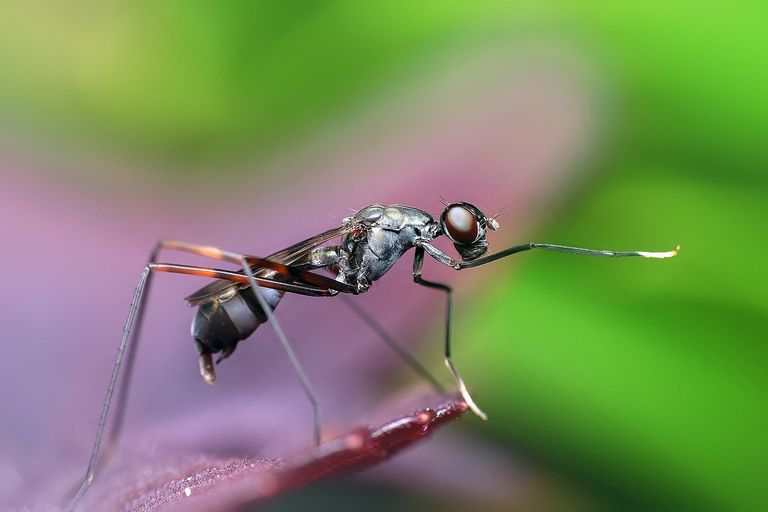FACTORS RESPONSIBLE FOR THE BIOLOGICAL SUCCESS OF THE PHYLUM ARTHROPODA
Arthropods are extremely successful group of animals. They constitute about 80% of all described animal species and their biological success are attributed to a number of their characteristics.
1. CHITINOUS EXOSKELETON
Arthropods are successful mainly due to the possession of chitinous exoskeleton which makes them versatile.
- It is protective in nature and also allows mobility and flexibility.
- The exoskeleton protects arthropods from most chemicals except strong acids and bases.
- The integument can form concealing colours and shapes to avoid being detected by predators.
- It forms a barrier to pathogens and predators. It also resists harmful effects o ultra violent rays.
- The integument is a reservior for waste products. It is an excellent structure for attaching a musculature system with good leverage.
2. SMALL SIZE
The small size of arthropods is a major factor responsible for their biological success. It is usually the small to medium-sized animal species that have survived the long and rigorous geological history of the earth. Some of the advantages of small size include
- require less energy and time to complete development.
- need less energy to sustain life at both individual and population level.
- easily protect themselves from predators and environmental extremes.
- have greater number of ecological habitats to exploit compared with larger organism.
- they can be randomly disorder by wind action with ease.
3. HABITAT AND GEOGRAPHICAL DISTRIBUTION
- They have great adaptability and have radiated into many most aquatic and terrestrial habitat.
- They are ubiquitous(found almost everywhere).
- They capture all ecological niche. They are found on land, in water and air.
4. LARGEST NUMBER OF INDIVIDUALS
Arthropods have the largest number of individuals as well as species.
- They exhibit a high degree of speciation and versatility.
- The have the greatest number of species in animals and many of the classes have more number of described species than many other animal phyla. More than 80% of described animal species are arthropods.
5. FOOD CONSUMPTION
- The feednkn various food substances and they also consume large amount of food.
- They feed in vegetables and dead organic materials, animals especially other insects.
- A few are more specific in the selection of food on which they feed while majority are virtually omnivorous.
6. MODIFICATION OF APPENDAGES
- The class insecta has evolved numerous mouthpart modifications to the extent that they could feed on virtually all organic materials.
- This include: chewing, cutting-sponging, siphoning, piercing-sucking and chewing-lapping.
- Arthropods exhibit diverse types of locomotion and a wide range of structural variations.
EVOLUTION OF ARTHROPOD
The diagnostic features of arthropod can be traced directly to the development of their co-exoskeleton. The ancestors of the arthropods are the polychaetes and various structural and functional changes that took place in the polychaetes is referred to as Arthropodization.
Arthrpodization of the annelid ancestors involves the following;
- Acquistion of a chitinous cuticle.
- Jointed appendages.
- Conversion of muscles into bundles.
- Replacement of hydraulic movement with lever movement.
- Reduction of the coelom(body cavity).
- Open blood system.
- Loss of nephridia.
- Small size.
- Growth by moulting or ecdysis.
CLASSIFICATION OF ARTHROPODA
The phylum arthropoda is divided into 4 sub-phyla:
Sub-phylum Trilobitomorpha (all members are extinct).
Subphylum Chelicerata:
Class Merostomata e.g giant water scorpion, horse shoe crab.
Class Arachnida e.g spiders, scorpions, ticks, mites.
Class Pcynogonida e.g sea spiders.
Subphylum Crustacean:
Class Remipedia e.g car dwelling crustacean.
Class Cephalocarida e.g small leaf-like crustecean.
Class Branchiopoda e.g fairy, brine and clam shrimp, water fleas.
Class Malacostraca e.g lobsters, crayfish, crabs, shrimp, isopod.
Class Copepoda e.g copepods.
Class Cirripedia e.g barnacles.
Subphylum Uniramia:
Class Diplopoda e.g millipedes.
Class Chilopoda e.g centipedes.
Class Symphyla e.g symphalans.
Class Pauropoda e.g pauropods.
Class Hexapoda e.g insects.
